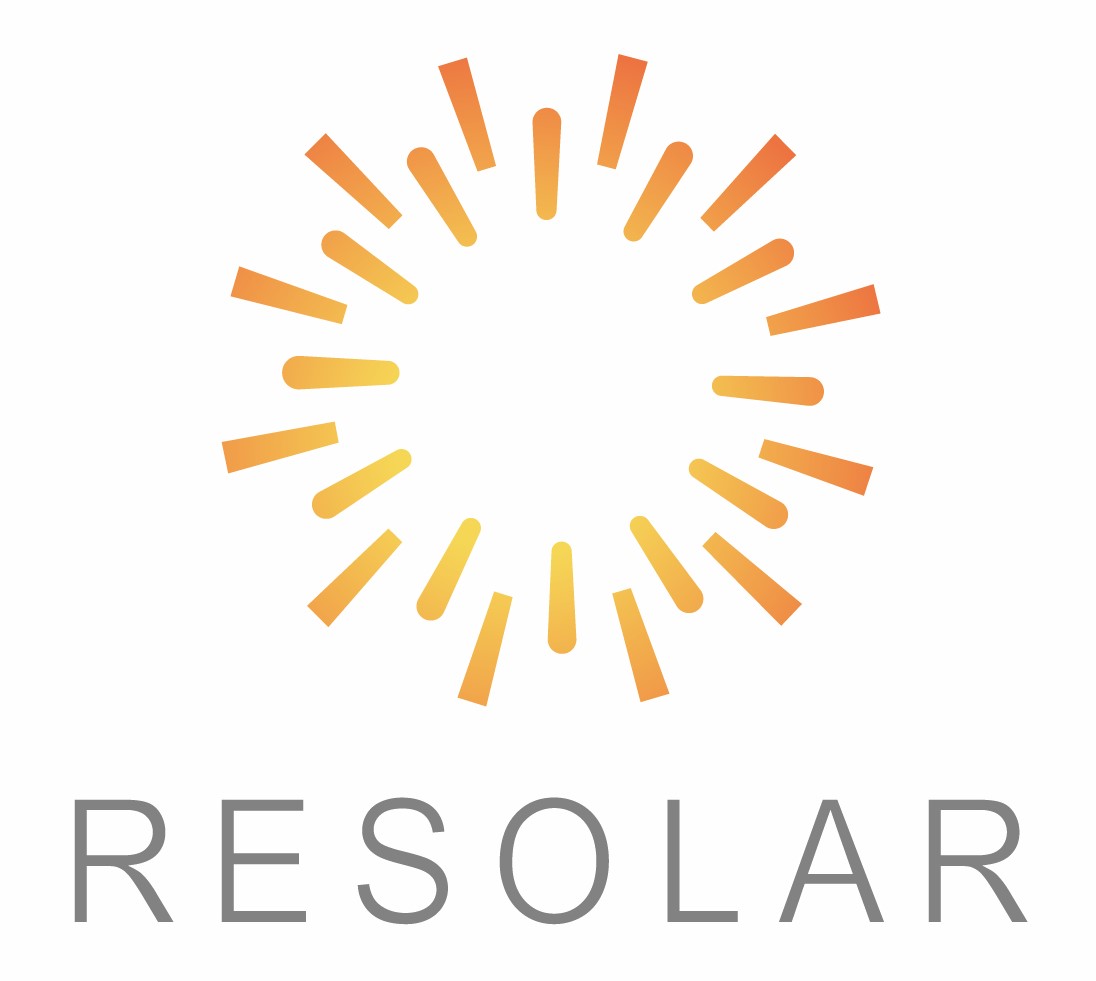News Center
—— NEWS CENTER ——
Mr. Shen, an individual recycler who lives in Suzhou, saw an opportunity two years ago and decided to switch to a new industry: second-hand photovoltaic panel recycling.
"We usually recycle thousands of sheets at a time, and we are unwilling to accept orders with small quantities." Lao Shen said bluntly when communicating with China Energy Network: Changing careers is not a mistake, because the photovoltaic module recycling business is too hot.
"When the price is high, the recycling price of a relatively new board can reach 1,000 yuan. It costs 30,000 yuan to pack a box. A 17.5-meter car can hold more than 20 boxes. This car costs 700,000 to 800,000 yuan. .”
Photovoltaic modules, also known as solar panels, are the key units in the equipment manufacturing process of the solar power generation industry. A module with a size of 2.7 square meters (calculated according to the mainstream size) comes off the assembly line, and the next step is to arrive at the photovoltaic power station construction site in full swing. The price fluctuation of photovoltaic modules affects the arteries of the industry, and its life and quality determine the level of power generation.
Generally speaking, the service life of a single photovoltaic panel is 25 to 30 years. As the years of use increase, the efficiency of modules to convert sunlight into electricity will gradually decrease, which is what the industry calls attenuation. Therefore, even if there is no obvious damage to the photovoltaic modules that have reached their end of life, they need to be "decommissioned" normally.
China began the process of photovoltaic industrialization around 2000, so the large-scale "decommissioning wave" of photovoltaic modules is already in sight. The industry that pioneered the "green and low-carbon new trend" is now facing the problem of how to digest decommissioned components in a low-carbon way.
So, how many photovoltaic modules in the Chinese market will enter the retirement period? The International Energy Agency (IEA) predicts that by 2030, China's photovoltaic modules entering the end-of-life period will reach about 1.7 million tons. This is an extremely large number and will continue to increase in the future.
"Actually, China's photovoltaic module decommissioning wave has already started this year, and it will fully arrive around 2025." Lu Fang, secretary-general of the photovoltaic committee of China Green Supply Chain Alliance, told China Energy Network.
Lu Fang has long studied the recycling of photovoltaic modules in China. She said that since this year, many photovoltaic power generation companies have consulted her on how to deal with "retired" modules. "This issue should attract the attention of the whole industry. China's photovoltaic industry must form a closed loop to achieve green and environmental protection throughout the life cycle."
Is the recycling market ready for the "decommissioning wave" of photovoltaic modules? Where will 1.7 million tons of scrap components go? The problem has been placed in front of Chinese photovoltaic enterprises.
"Collecting trash" or a new industry growth point?
The recycling market will be the final destination of millions of tons of scrap components. However, at present, the domestic component recycling market has not yet formed a professional service, and is flooded by countless "small workshop" merchants.
Many "small workshop" owners are sensitive to traffic platforms. They post videos and pictures of themselves recycling photovoltaic modules through WeChat groups, Douyin or video accounts, so as to attract the attention of business owners who need recycling and solicit business.
China Energy Network saw that a large number of recycled photovoltaic panels were piled up by the buyer in an outdoor environment, exposed to sunlight, and some were mixed with other household waste. This approach is obviously problematic.
Huaxia Energy Network noticed that in the GB/T 39753-2021 "National Standard for General Technical Requirements for Photovoltaic Module Recycling" that China began to implement on February 1, 2022, under the terms of collection, transportation and storage, Article 1 It reads "During the process of collecting, transporting and storing waste photovoltaic modules, it is necessary to avoid exposure of waste photovoltaic modules to sunlight to cause fire, leakage and other safety hazards."
The "small workshop" recycling bosses who are shouting around obviously fail to meet the requirements of the national standard.
A photovoltaic module recycler who has been posting recycling information on the Douyin account for a long time told China Energy Network that the entry threshold for practitioners is very low, and they only need to apply for a "recycling certificate".
However, the aforementioned Suzhou recycler Lao Shen said that to engage in photovoltaic module recycling business, you need to register a company first. However, China Energy Network found that the industrial and commercial information showed that Lao Shen's company had been canceled at the end of last year.
Can these mountains of components be recycled? Where did the large-scale recycling of photovoltaic panels go?
Lao Shen told China Energy Network, "We directly export to Pakistan and other places, and the price can be sold for 120 yuan if it is recycled for 70 yuan. This is much more profitable than recycling."
It is understood that such merchants exporting second-hand photovoltaic panels are concentrated in Jiangsu and Zhejiang. They take advantage of geographical advantages to carry out foreign trade. Many companies have become very large, and many bosses have made a fortune and opened Ferraris.
In addition, other completely scrapped photovoltaic modules no longer have the function of generating electricity, and their fate is to be disassembled as waste products.
Among the most mainstream components in the market at present, glass accounts for about 70% of the total weight, aluminum frames account for about 18%, solar cells account for about 4%, and metals such as lead, silver, and gallium account for about 1%.
Located in Funing County, Jiangsu Province, Ms. Qi, who is in the dismantling business, told China Energy Network that she mainly recycles the aluminum alloy and glass in the scrapped components, "these are valuable and easy to disassemble." As for how to deal with the rest, Ms. Qi refused to disclose.
An anonymous industry insider told Huaxia Energy Net that after the usable part is sold, the rest is basically taken to the garbage station for incineration.
Module recycling should be a new growth point for the photovoltaic industry in the future. But at present, the market is still in the initial stage of "collecting junk", and even has nothing to do with gray production.
Chaos and rule it or rule it before chaos?
Regarding the status quo of the component recycling market, Lu Fang believes, "Our component recycling industry has just begun. We can't wait until there are thousands of companies, large and small, to regulate it. We should take precautions before they happen, and start researching and establishing a healthy environment now." , standardized market order.”
However, in order to bring order out of chaos, three major problems must first be resolved.
First, component handling techniques need to be optimized.
At present, there are two major methods for the disposal of waste components in China, physical method and chemical method. Module recycling demonstration lines based on these two methods have been built in Baoding, Hebei and Shangrao, Jiangxi respectively. But this is just a small step from the laboratory, and there is still a certain distance from industrialization.
Lu Fang told China Energy Network, "Compared with other countries, our component recycling technology is 'running parallel' in many basic scientific research areas, and some are even 'leading'. But to enter the stage of real industrialization, we still need some Adaptive process technology.”
The component processing technology developed in the laboratory can cope with the specific component working conditions in the laboratory. But in actual component recycling, the working conditions are much more complicated. The so-called "adaptive process technology" refers to the optimization based on the existing scientific research technology, so that the component processing technology can adapt to the complex working conditions of waste components.
Second, there is a lack of key data.
Regarding when, where, and how much photovoltaic modules will be decommissioned, there is no very accurate prediction in China, and data from international agencies are often cited. Without accurate data support, it is difficult to formulate guiding policies for the industry.
Lv Fang revealed that the "Photovoltaic Recycling Industry Development Cooperation Center" where she works is trying to establish an accurate model to predict the time and quantity of China's photovoltaic module decommissioning, and it is estimated that the results will be available in the second half of this year.
Third, there is a lack of standardized standards and management systems.
According to Hou Guiguang, Director of the Comprehensive Business Department of the Solid Management Center of the Ministry of Ecology and Environment, there are many gaps in standards and management policies in the current cycle from scrapping to storage, dismantling, and smelting. There is no relevant regulation. Due to the lack of clear policy guidance, in the actual recycling process, it is difficult to determine a feasible solution for technology and business models.
In addition, there is currently a lack of institutional regulations regarding the identification of component recycling entities and requirements for recycling qualifications, making it difficult to establish a relatively healthy market order.
The good news is that relevant standards and policies are constantly improving.
In December 2022, the China Photovoltaic Industry Association issued 11 standards, including the "Guidelines for the Scrapping of Crystalline Silicon Photovoltaic Modules", which aims to regulate stock photovoltaic power plants and guide them to identify crystalline silicon photovoltaic modules that need to be scrapped among old components. It can be recycled smoothly.
In January of this year, the Ministry of Industry and Information Technology and other six departments issued the "Guiding Opinions on Promoting the Development of the Energy Electronics Industry", which further required to speed up the construction of a photovoltaic supply chain traceability system, emphasizing the promotion of photovoltaic module recycling technology research and development and industrial application.
Losing money and making money or platform model bonus?
The decommissioning wave of photovoltaic modules is a new topic for photovoltaic enterprises. Huaxia Energy Network noticed that in terms of component recycling, leading companies have already made plans and actions.
The aforementioned two module recycling demonstration lines built in Baoding, Hebei and Shangrao, Jiangxi are respectively owned by Yingli Energy and JinkoSolar (SH: 688223). They are also domestic leading companies that entered the photovoltaic industry earlier.
JinkoSolar stated in its 2022 ESG report, "The high-value environmental protection processing route developed by JinkoSolar can not only disassemble and recycle aluminum frames, junction boxes, and glass, but also recycle silicon and metals in cells. By digging deep into the value of product recycling and reuse, the recycling rate of some materials can reach 99%.”
Yin Xulong, chairman of Yingli Energy, was interviewed by the media in June this year when he was asked "which part of the photovoltaic industry is optimistic about", his answer was "module recycling".
In addition, Huaxia Energy Network noted that there are 68 member units of the "Photovoltaic Recycling Industry Development Cooperation Center", and the chairman unit is the State Power Investment Corporation Yellow River Upstream Hydropower Development Co., Ltd., LONGi Green Energy (SH: 601012), Chint New Photovoltaic giants such as Solar Energy, JA Solar (SZ: 002459), Trina Solar (SH: 688599), and JinkoSolar are among the vice-chairman units. It can be seen that the photovoltaic giants have a strong interest in module recycling and have gathered into a force.
However, Lu Fang reminded, "Recycling of photovoltaic modules is not as simple as entrepreneurs imagined. It is difficult to accomplish things only by capital and interest."
Lv Fang divided companies interested in PV module recycling into four categories. The first is a photovoltaic module production enterprise; the second is an operation and maintenance enterprise; the third is a terminal power generation enterprise; the fourth is a professional solid waste treatment enterprise. But no matter what kind of enterprise is doing component recycling, it cannot rely on strong capital to be invincible like in other industries. "Having capital is not as good as having a viable business model."
Right now, in the photovoltaic module recycling industry, the "regular army" of enterprises has been eroded by individual "small workshops" with a large amount of market share, and even completely crushed in terms of costs and benefits.
The problem is first reflected in the recycling price of components, which is very confusing and the quotations vary greatly. Many individual recyclers of photovoltaic modules interviewed by China Energy Network were confused in their quotations.
Taking a photovoltaic panel with a power of 250W that has been used for more than 5 years as an example, the recycling price given by Lao Shen is 70 yuan. "The power will always decay. The original 250W may only be 100W after 5 years."
Ms. Qi, an individual recycler, gave a price of more than 100 yuan. Ms. Qi said that this is already very high, "You remove the upper aluminum frame and sell it to a waste collection station. A board can only sell for 30 yuan."
According to a previous report by China Business News, among the quotations given by a "regular army" company specializing in the recycling of photovoltaic modules, a 250W photovoltaic module is only 15-50 yuan.
The phenomenon of "bad money driving out good money" has emerged under the model of "collecting junk" and chaotic price competition.
The recycling price of waste photovoltaic modules has far exceeded the affordability of enterprises. According to the "Economic Daily" report, an operator of a photovoltaic module recycling company believes that "the extensive refining method of small workshops does not consider environmental protection costs at all, so there is still room for profit. Recycling will result in a 100% loss.”
Liu Limin, Deputy Secretary-General of the Photovoltaic Recycling Industry Development and Cooperation Center of the China Green Supply Chain Alliance Photovoltaic Committee, once calculated an account at an expert symposium: the total revenue of a standard-sized photovoltaic module recycled by a company is 56 yuan, but the cost is 75 yuan, 19 yuan for recycling one piece.
How did recycling become a loss-making business? This is unimaginable in areas where second-hand recycling is relatively mature, such as smart hardware, batteries, and private cars.
In the past ten years, used cars, used 3C, used books and other fields have developed relatively mature platform economic models. It is not a difficult problem to make the circular economy into a sustainable industry with a clear business model.
The experience of these industries shows that if the "regular army" of photovoltaic enterprises wants to enter the market, in addition to innovation in professional and technical capabilities, they should also embrace the dividends of the platform model in order to get rid of the dilemma of "losing money and making money".
It is worth noting that the government and industry associations are also working hard to help photovoltaic companies innovate business models.
In Chapters 4 and 5 of the "Implementation Plan for Promoting the High-Quality Development of New Energy in the New Era" released by the National Energy Administration in May this year, it is proposed to promote the development of decommissioned wind turbines, photovoltaic module recycling and processing technologies, and related new industrial chains. , and will "establish a reasonable business model" and "accelerate the formulation of policies and standards, and improve industry standards, technical specifications, certification systems, etc. as soon as possible" as the focus of the next step.
Huaxia Energy Network noticed that on June 20 this year, the China Photovoltaic Industry Association established a photovoltaic module recycling working group to promote business model innovation for module recycling, which has also become one of the main purposes of the working group.
Under the tide of photovoltaic module decommissioning, a new growth point of the industry is emerging. In addition to the sense of urgency to build a green and environmental protection closed loop, photovoltaic enterprises must find a sustainable business model. After all, if they can't survive, how can the "regular army" talk about fighting the "small workshop"?
About RESOLAR
Shanghai RESOLAR Energy Technology Co., Ltd. is committed to becoming a recycled material photovoltaic group with deep decarbonization. RESOLAR focuses on technological innovation and builds a world-leading solution for component recycling, impurity removal of damaged cells, recycled silicon materials and cells, and cascaded utilization of components. With professional technology and services, we help customers realize the recycling and reuse of waste photovoltaic resources, and make positive contributions to the development of environmental protection and new energy industries. For more detailed information, you can browse the official website: www.resolartech.com .
Latest developments/news
Contact information
Service Hotline: 13585742918 (Monday to Friday 9:00-18:00)
Enterprise email: ps@resolartech.com (Reply within 48 hours after receiving the email consultation!)
Company Address: Building 8, No. 1528, Wangxu East Road, Fengjing Town, Jinshan District, Shanghai (Caohejing Fengjing Park)



